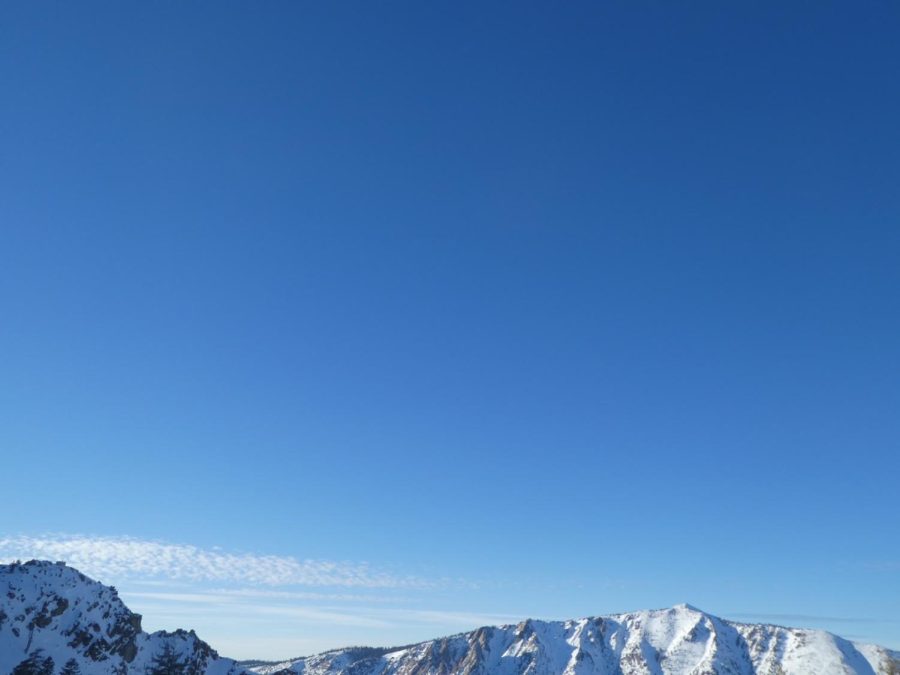The California Drought, Continued
Snow caps are melting earlier and earlier in the spring, causing water shortages for the remainder of the year.
2011-2014: the years that required us to perpetually turn off the tap. The years during which hot days meant sweltering, not running through sprinklers. The years water parks became dry concrete, and people started landscaping with cacti, and grasses turned golden brown before disintegrating altogether.
2013 and 2018: the years wildfires became the norm. Yosemite ignited, Paradise turned to ash. One person’s choice to light an illegal campfire incinerated an entire wilderness. The soil was just too flammable, too dry. And the water to put the fires out had evaporated from the state.
California’s youth have grown up in unnaturally arid conditions, requiring mindful water consumption and restrictions. This generation has never experienced “normal” rain patterns — instead, we have grown up in a state of near chronic drought.
Droughts are not unprecedented in world history, or in California history. Yet the drought in the early 2010’s was so bad that scientists labeled it as “the worst in 1,200 years.” Combining record temperatures with minimal rainfall, the state faced a crisis.
Following the couple-year interim during which rainfall remained low, but not drastically so, California is back to dehydration. While the drought does not tend to occupy the forefront of problems California currently faces, it bodes ill for the state’s residents, food production, and wilderness, as well as the future impacts of climate change. The droughts that the region has experienced during the past decade do not correspond with historical scarcities. In an era of extremes — of unending fire seasons, unexpected hurricanes, and record temperatures — California’s recent droughts only extend the reach of humanity’s catastrophic influence.
The current drought, compared to that of the 2010’s, has received markedly less press and media attention — an alarming precedent. By late December, most of California rested in the D2 or D3 drought classifications: Severe and Extreme Drought. This corresponds in severity with late 2013 levels.
Moreover, this ‘new’ drought is not contained within California; Nevada, New Mexico, Arizona, and Utah all faced this century’s record lows in precipitation. In early February, water levels again shattered records and became the new “worst drought in 1200 years.”
With this all in mind, on October 29th last year, Governor Gavin Newsom declared a state of emergency. California citizens were to reduce water consumption voluntarily by 15-20%, and sidewalk-washing and other non-essential water uses were banned. Unsurprisingly, this has proved a challenge: overall, the state has reduced water consumption only by around 6-7 %. On the bright side, usage has stabilized nearly 16% below 2013 levels.
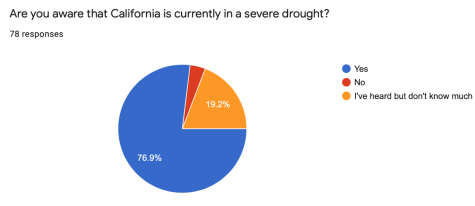 SHC students currently range from being aware of the drought and working to decrease their water use, to being shocked that we face yet another shortage. Junior Aoife Morales summed up the experience of many in a short comment, saying “I feel like now it’s a habit, that we’re in a drought.”
SHC students currently range from being aware of the drought and working to decrease their water use, to being shocked that we face yet another shortage. Junior Aoife Morales summed up the experience of many in a short comment, saying “I feel like now it’s a habit, that we’re in a drought.”
In a student poll with 78 responses as of February 12th, 3.8% of students did not know of the drought, while 19.2% reported that they had heard news about it but did not know much. Despite the remaining 76.9% of respondents being aware of the drought, only 71.8% reported actually taking steps with their families to reduce their water footprint.
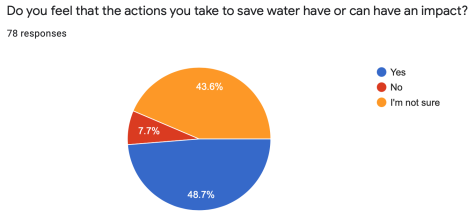 Nearly half of students in the survey admitted to not feeling sure that the actions they take to save water can actually have an impact, and 7.7% definitively responded that they felt their actions do not have any impact. Yet just like any other community-wide issue, every person needs to contribute to generate change.
Nearly half of students in the survey admitted to not feeling sure that the actions they take to save water can actually have an impact, and 7.7% definitively responded that they felt their actions do not have any impact. Yet just like any other community-wide issue, every person needs to contribute to generate change.
Mr. Le, SHC’s AP Environmental Science teacher, discussed how students can decrease their water consumption. “Our school’s main issue is careless meat consumption,” he says, referring to the concept of virtual water use. The water we actually consume for drinking, showering, lawns, laundry, and other household tasks only makes up a fraction of our water footprints (calculate your own here!). Meanwhile, water used in the production of products we consume — such as food, clothing, technology, and furniture — makes up our ‘virtual water use’. 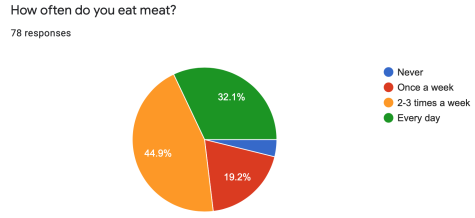 Mr. Le points out students’ high meat consumption, reiterating that “if we’re going to make any inroads for a teenager at our school, it’s in shopping and meat.” It is interesting to note that only 3 of the 78 SHC students who responded to the Emerald’s survey never eat meat, and most students eat meat 2-3 times per week (44.9%) or every day (32.1%). If reducing meat and animal product consumption is not a possibility, however, “taking shorter showers [and] planting your gardens with drought tolerant or native plants are two [other] ways that students can manage their water better,” according to Mr. Le.
Mr. Le points out students’ high meat consumption, reiterating that “if we’re going to make any inroads for a teenager at our school, it’s in shopping and meat.” It is interesting to note that only 3 of the 78 SHC students who responded to the Emerald’s survey never eat meat, and most students eat meat 2-3 times per week (44.9%) or every day (32.1%). If reducing meat and animal product consumption is not a possibility, however, “taking shorter showers [and] planting your gardens with drought tolerant or native plants are two [other] ways that students can manage their water better,” according to Mr. Le.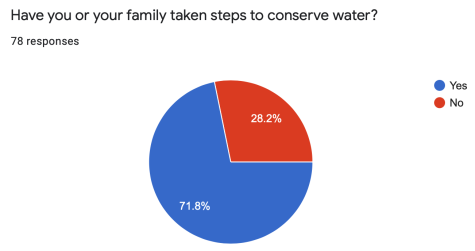
Droughts have become part of the new normal for much of the western United States. Just like wildfires, we have lost the luxury of waiting them out and hoping for the best. Climate change no longer looms — it is upon us, and California is sounding a dry and fiery warning. Starting with our own actions and by advocating within our school community, we can work together to prepare.

After three years of writing and editing for the Emerald, Atessa is serving as Editor-in-Chief during her final year at SHC. She’s an avid bookworm and...

